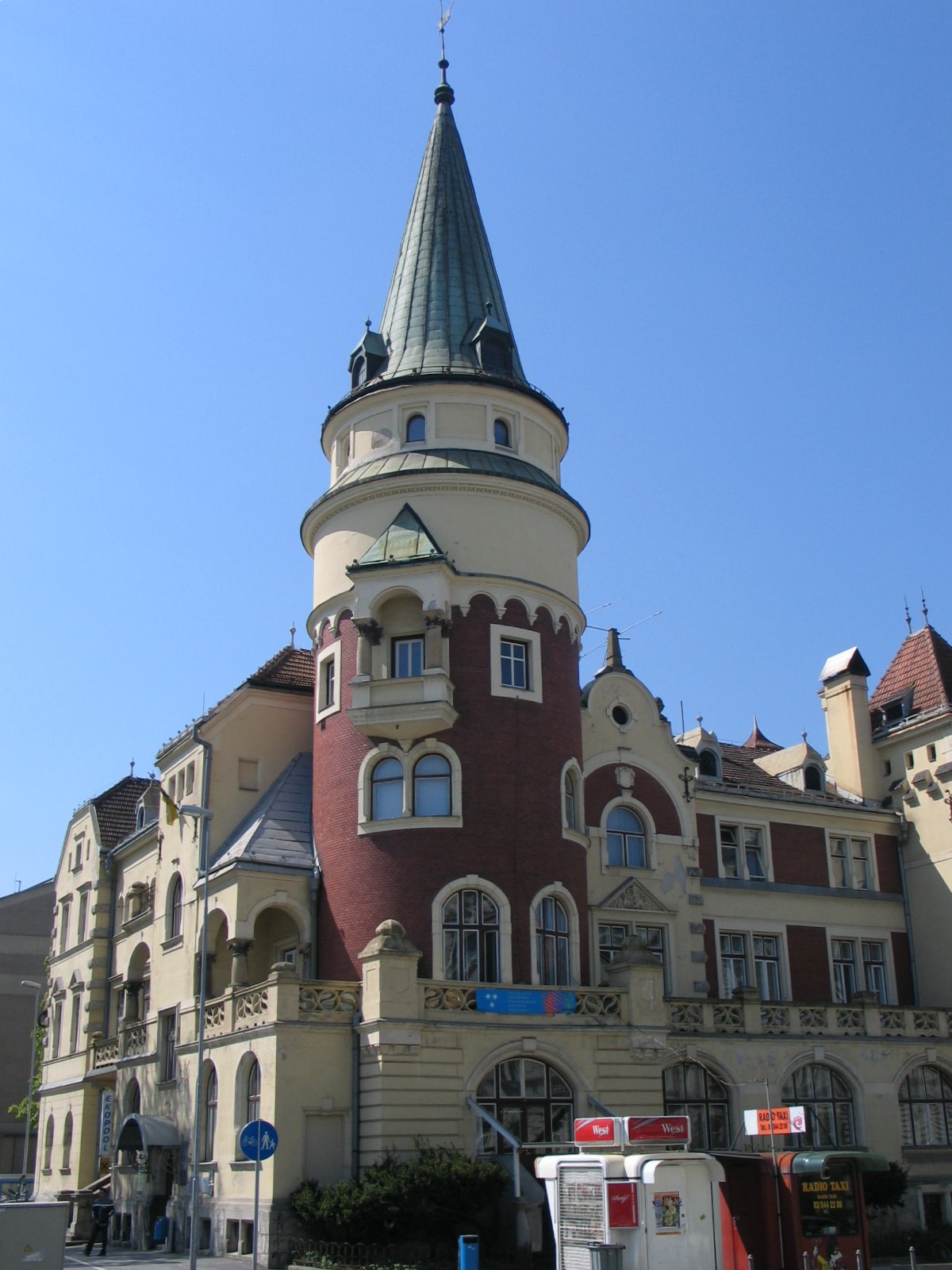Celje Hall on:
[Wikipedia]
[Google]
[Amazon]
 Celje Hall () is a community center in
Celje Hall () is a community center in
 Celje Hall () is a community center in
Celje Hall () is a community center in Celje
Celje (, , ) is the List of cities and towns in Slovenia, third-largest city in Slovenia. It is a regional center of the traditional Slovenian region of Styria (Slovenia), Styria and the administrative seat of the City Municipality of Celje. Th ...
, a town in central-eastern Slovenia
Slovenia, officially the Republic of Slovenia, is a country in Central Europe. It borders Italy to the west, Austria to the north, Hungary to the northeast, Croatia to the south and southeast, and a short (46.6 km) coastline within the Adriati ...
. Today it hosts several cultural associations and the town's tourist information centre, and is a venue for concerts and theatre.
Overview
The hall was built in an eclectic style by the Viennese architect Peter Paul Brang between 1905 and 1906 as the main seat of ethnic German associations in the town. It was opened on 15 May 1907. The hall was intended to contrast with Celje National Hall, which had a similar function for the localSlovenes
The Slovenes, also known as Slovenians ( ), are a South Slavs, South Slavic ethnic group native to Slovenia and adjacent regions in Italy, Austria and Hungary. Slovenes share a common ancestry, Slovenian culture, culture, and History of Slove ...
. The building's original name was the "German Center" ( German ''Deutsches Haus'') and it was used as the main community center for the purposes of the local German-speaking population and by those that identified with German culture.
In 1919, after the dissolution of Austria-Hungary
Austria-Hungary, also referred to as the Austro-Hungarian Empire, the Dual Monarchy or the Habsburg Monarchy, was a multi-national constitutional monarchy in Central Europe#Before World War I, Central Europe between 1867 and 1918. A military ...
, the building was confiscated from the German community by the new Yugoslav authorities and renamed "Celje Hall". Several cultural associations were placed in the building, including the Hermagoras Society publishing house, which was after the Carinthian Plebiscite expelled from its original location in Klagenfurt, Austria
Austria, formally the Republic of Austria, is a landlocked country in Central Europe, lying in the Eastern Alps. It is a federation of nine Federal states of Austria, states, of which the capital Vienna is the List of largest cities in Aust ...
. Throughout the period of the Kingdom of Yugoslavia
The Kingdom of Yugoslavia was a country in Southeast Europe, Southeast and Central Europe that existed from 1918 until 1941. From 1918 to 1929, it was officially called the Kingdom of Serbs, Croats, and Slovenes, but the term "Yugoslavia" () h ...
, the German community tried to get back the property and the building, but they were unsuccessful. After the Nazi German
Nazi Germany, officially known as the German Reich and later the Greater German Reich, was the German state between 1933 and 1945, when Adolf Hitler and the Nazi Party controlled the country, transforming it into a totalitarian dictat ...
occupation of northern Slovenia and Lower Styria
Styria (, ), also known as Slovenian Styria (; ) or Lower Styria (; ) to differentiate it from Austrian Styria, is a traditional region in northeastern Slovenia, comprising the southern third of the former Duchy of Styria. The population of St ...
in April 1941, the building was again restored to its former use. With the defeat of the Nazi regime in May 1945, most of the ethnic Germans fled the town together with the occupying German armed forces, whereas the others were expelled by the Yugoslav Communist authorities. The building was again renamed "Celje Hall".
References
External links
* {{DEFAULTSORT:Celje HallHall
In architecture, a hall is a relatively large space enclosed by a roof and walls. In the Iron Age and the Early Middle Ages in northern Europe, a mead hall was where a lord and his retainers ate and also slept. Later in the Middle Ages, the gre ...
Buildings and structures completed in 1906
Peter Paul Brang buildings
Gothic Revival architecture in Slovenia
1906 establishments in Austria-Hungary
20th-century architecture in Slovenia